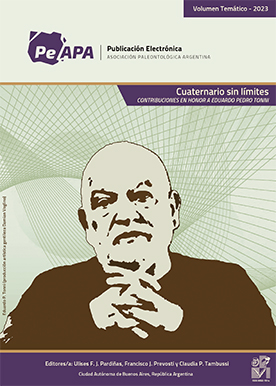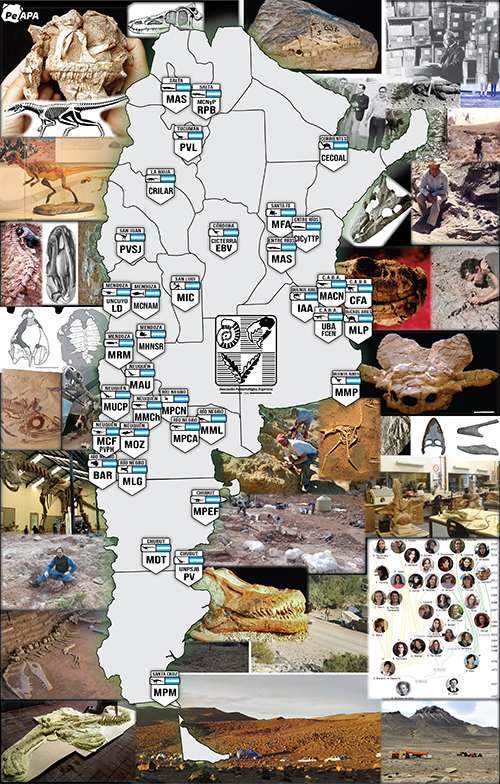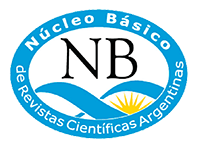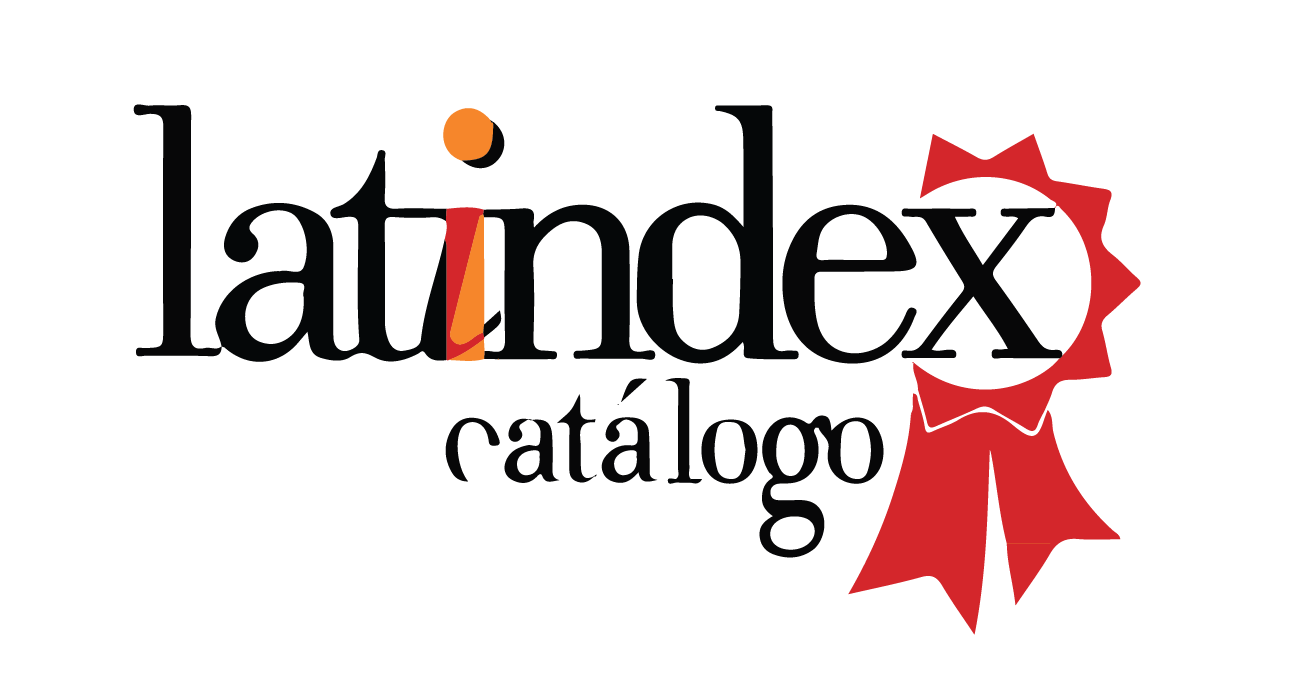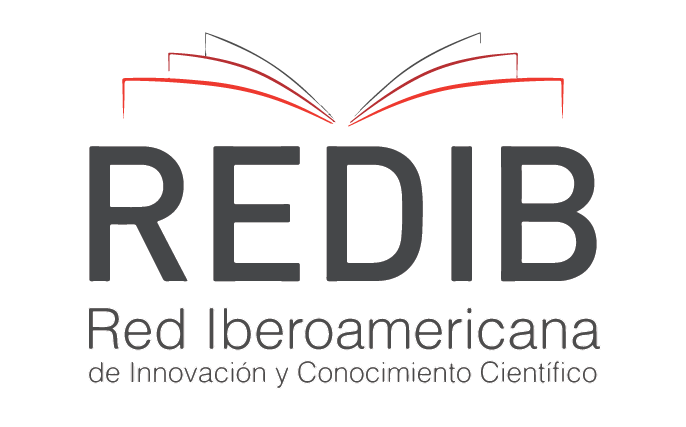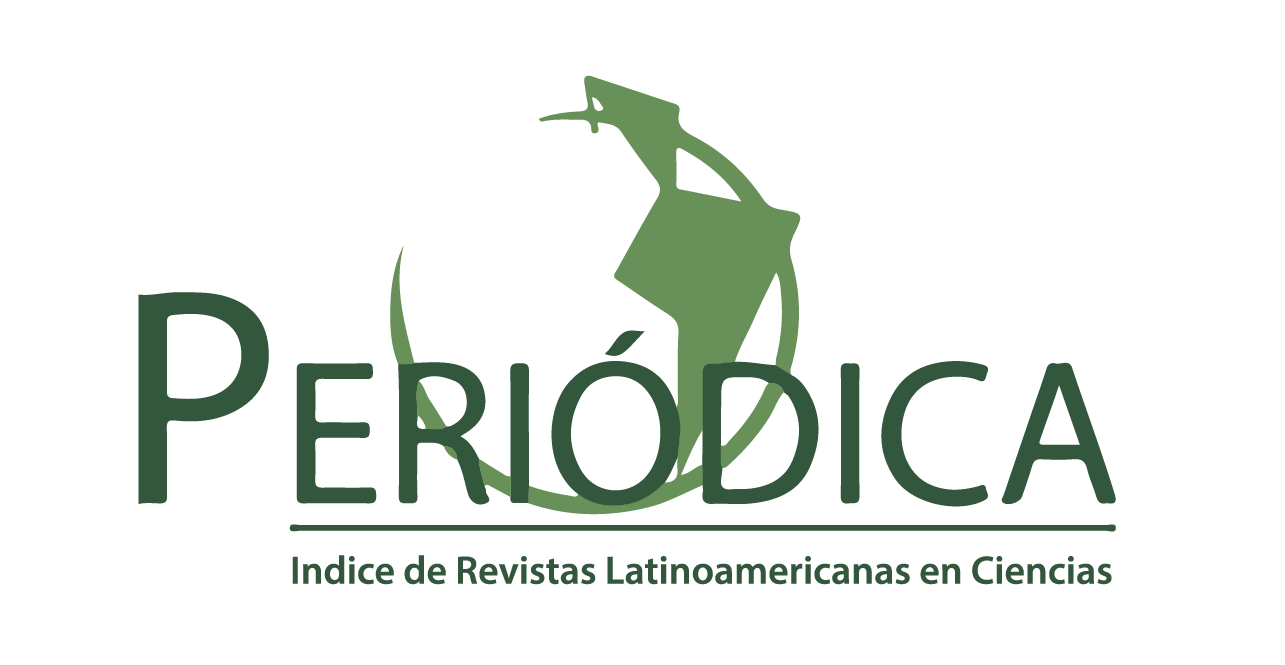RICHNESS OF THE FOSSIL RECORD OF JALISCO, MEXICO
DOI:
https://doi.org/10.5710/PEAPA.09.10.2023.471Keywords:
Diversity, Quaternary, Neogene, Cretaceous, Guadalajara, ChapalaAbstract
Fossil deposits ranging from lower Cretaceous to the Quaternary are found in Jalisco state, western Mexico. This study presents a systematic list of the fossil record of Jalisco, Mexico, and analyze the composition of their richness. The corresponding literature was reviewed and the main paleontological collections with fossil material from the region were consulted. A total of 293 species organized into three kingdoms, six phyla, 12 classes, 49 orders, 87 families, and 184 genera were recorded. A total of 67 species (22.9%) are microfossils and 226 (77.1%) are macrofossils. Microfossils include two species of foraminifera (3%) and 65 of diatoms (97%). Among macrofossils, the best represented group at class level are Mammalia with 110 species (48.7%), followed by Gastropoda with 37 (16.4%), Sauropsida with 35 (15.5%), and Teleostei with 30 (13.3%); the least represented classes are Isopoda, Scaphopoda, Amphibia, and Magnoliopsida with a single record each. The best represented period is the Quaternary with 199 species (67.9%), followed by the Neogene with 49 species (16.7%), and finally the Cretaceous with 45 (15.4%). By locality, the richest are Chapala and Zacoalco for the Quaternary, Tecolotlán of the Neogene, and Tamazula for the Cretaceous. The species included were registered from 1875 to 2022.
References
Aguilar, R. H., Uribe-Mu, C. A., Muñoz-Urias, A. & Pulido-Avila, M. G. (2022). Megaherbivore fossil record from the Neogene of Jalisco, Mexico, and its implications for paleoenvironmental interpretation. New Mexico Museum of Natural History and Science Bulletin, 90.
Aguilera, J. G. (1906). Apercu sur la Geologie du Mexique pour servir d’explication á la Carte Géologique de l’Amerique du Nord. In Compte-rendu Xe Congrés Geól. Intern. Mexico. Ministére de Fomento.
Alberdi, M. T. & Corona M., E. (2005). Revisión de los gonfoterios en el Cenozoico tardío de México. Revista Mexicana de Ciencias Geologicas, 22(2), 246–260.
Alencaster, G. (1986). Nuevo rudista (Bivalvia-Hippuritacea) del Cretácico inferior de Pihuamo, Jalisco. Boletin de La Sociedad Geologica Mexicana, 47(1).
Alvarez del Villar, J. (1974). Contribución al conocimiento de los peces fósiles de Chapala y Zacoalco (Aterínidos y Ciprínidos). Anales Del INAH, 7, 191–209.
Alvarez, J. (1966). Contribución al conocimiento de los bagres fósiles de Chapala y Zacoalco, Jalisco, México. INAH Paleoecología, 1, 1–26.
Álvarez, J., & Arriola-Longoria, J. (1972). Primero goodeido fósil procedente del Plioceno jalisciense. Boletín de La Sociedad de Ciencias Naturales de Jalisco, 6.
Alvarez, R. (1977). A Pleistocene avifauna from Jalisco, Mexico. Contributions from the Museum of Paleontology, University of Michigan, 24(19)(19), 205–220. http://deepblue.lib.umich.edu/bitstream/2027.42/48486/2/ID336.pdf
Amezcua-Torres, N. (2000). Estudio paleobotánico de la localidad El Bajío en la Caldera de la Sierra de la Primavera. Universidad de Guadalajara.
Arroyo-Cabrales, J. Polaco, O. & Johnson, E. (2002). La mastofauna del cuaternariio tardío en México. In J. Montellano, M.; Arroyo-Cabrales (Ed.), Avances en los estudios paleomastozoológicos. (INAH).
Bárcena, M. S. J. (1875). Descripción de un crustáceo fósil del género Spheroma (Spheroma burkatii) y reseña geológica del Valle de Ameca de Jalisco. La Naturaleza, 1(3), 355–361.
Benton, M. J., & Harper, D. A. T. (2009). Introduction to Paleobiology and the Fossil Record. Blackwell Publishing.
Brook, B. W. & Alroy, J. (2017). Pattern, process, inference and prediction in extinction biology. Biology Letters, 13, 1–3.
Buitrón-Sánchez, B. (1986). Gasterópodos del Cretácico (Aptiano tardío-Albiano temprano) del cerro de Tuxpan, Jalisco. Boletín de La Sociedad Geológica Mexicana, 47(1).
Buitrón-Sánchez, B. E. & Gómez-Espinosa, C. (2005). Cretaceous (Aptian-Cenomanian) gastropods of Mexico and their biogeographic implications. AAPG Memoir, 79, 71–73.
Buitrón-Sánchez, B. & López-Tinajero, Y. (1995). Mollusk gastropods in Lower Cretaceous rudist-bearing formation of Jalisco, west central Mexico. In Revista Mexicana de Ciencias Geológicas (Vol. 12, Issue 2, pp. 157–168).
Carranza-Castañeda, O. (2006). Late Tertiary fossil localities in central Mexico, between 19°-23° N. In E. H. Carranza-Castañeda, O.; Lindsay (Ed.), Advances in Late Tertiary vertebrate paleontology in Mexico and the Great American Biotic Interchnage (pp. 45–60). UNAM.
Carranza-Castañeda, O. (2016). Roedores caviomorfos (Rodentia Hydrochoeridae) del Blancano tempranotardío - Irvingtoniano de los estados de Guanajuato, Jalisco y Sonora, México: Relación con Phugatherium dichroplax. Revista Mexicana de Ciencias Geologicas, 33(3), 297–315.
Carranza-Castañeda, O. (2018). Early and late Hemphillian records of Gomphotherium hondurensis (Mammalia: Proboscidea) from central Mexico. New Mexico Museum of Natural History and Science Bulletin, 79, 83–98.
Carranza-Castañeda, O., Aranda-Gómez, J. J., Wang, X. & Iriondo, A. (2013). The Early-Late Hemphillian (HH2) faunal assemblage from Juchipila Basin, state of Zacatecas, México, and its biochronologic correlation with other Hemphillian faunas in Central Mexico. Contributions in Science, 521, 13–49.
Carranza-Castañeda, O. & Miller, W. E. (2004). Late Tertiary terrestrial mammals from Central Mexico and their relationship to South American immigrants. Revista Brasileira de Paleontologia, 7(2), 249–261. https://doi.org/10.4072/rbp.2004.2.19
Cavender, T. M. & Miller, R. R. (1982). Salmo australis, a new species of fossil salmonid from Southwestern Mexico. Contributions from the Museum of Paleontology of The University of Michigan, 26(1), 1–17.
Corona, E. (2002). The Pleistocene bird record of México. Acta Zoologica Cracoviensia, 45, 293–306.
Cuadros M., I. M. (2018). Moluscos (Scaphopoda, Bivalvia, Gastropoda) del Cretácico Temprano de la región de Tuxpan, Jalisco, México [Ingeniero geólogo]. Universidad Nacional Autónoma de México.
Downs, T. (1958). Fossil vertebrates from Lago de Chapala, Jalisco, Mexico. Twentieth International Geographical Congress, 75–77.
Fernández B., M. R. (1999). Estudio de las asociaciones de diatomeas fósiles de El Arenal, Jalisco. Universidad Nacional Autónoma de México.
Ferrusquía-Villafranca, I. (2003). Mexico’ s Middle Miocene Mammalian Assemblages: An Overview. Bulletin American Museum of Natural History, 0090(279), 321–347. https://doi.org/10.1206/0003-0090(2003)279<0321
Ferrusquía-Villafranca, I., Arroyo-Cabrales, J., Martínez-Hernández, E., Gama-Castro, J., Ruiz-González, J., Polaco, O. J. & Johnson, E. (2010). Pleistocene mammals of Mexico: A critical review of regional chronofaunas, climate change response and biogeographic provinciality. Quaternary International, 217(1–2), 53–104. https://doi.org/10.1016/j.quaint.2009.11.036
García G., E. X. M., Mora-Núñez, M. & Maciel-Flores, R. (2014). Paleontología en Jalisco. In H. R. (Universidad de G. Solís (Ed.), Jalisco en el Mundo Contermporáneo: Aportaciones para una enciclopedia de la época. Tomo III, Ciencias Biomédicas y Fisico-Químico-Biológicas.
Guzmán, A. F. (2015). El registro fósil de los peces mexicanos de agua dulce. Revista Mexicana de Biodiversidad, 86(3), 661–673. https://doi.org/10.1016/j.rmb.2015.05.003
Guzmán, A. F. & Polaco, O. (2009). Peces fósiles mexicanos de agua dulce. In E. Ortega R., J.; Sedeño D., J..; López L. (Ed.), Setenta y cinco años de la Escuela Nacional de Ciencias Biológicas (pp. 313–337). Instituto Politécnico Nacional.
Guzmán, A. F., Stinnesbeck, W., Robles-Camacho, J. & Polaco, O. (1998). El paleolago de Amatitán, Jalisco: Estratigrafía, Sedimentología y Paleontología de la localidad tipo de Tapatia occidentalis (Osteichthyes:Goodeidae). Revista de La Sociedad Mexicana de Paleontología, 8(2).
Hammer, O. & Harper, D. A. T. (2006). Paleontological Data. Blackwell Publishing.
Howard, H. (1969). Avian fossils from three Pleistocene sites in Central Mexico. Los Angeles County Museum Contributions in Science, 172, 1–11.
Israde-Alcántara, I., Miller, W. E., Garduño-Monroy, V. H., Barron, J. & Rodríguez-Pascua, M. A. (2010). Palaeoenvironmental significance of diatom and vertebrate fossils from Late Cenozoic tectonic basins in west-central México: A review. Quaternary International, 219(1–2), 79–94. https://doi.org/10.1016/j.quaint.2010.01.012
Kowallis, B. J., Christiansen, E. H., Carranza-Castañeda, O. & Miller, Wade; Ross, K. (2017). The Geology of the Tecolotlan Graben, Jalisco, Mexico. 1–37. https://doi.org/10.1130/
Lucas, S. G. (2003). Pleistocene proboscideans from Lago de Chapala, Jalisco, Mexico. Current Research in the Pleistocene, 20, 105–107.
Lucas, S. G. (2008a). Late Cenozoic fossil mammals from the Chapala rift basin, Jalisco, Mexico. New Mexico Museum of Natural History and Science Bulletin, 44(April), 39–49.
Lucas, S. G. (2008b). Late Cenozoic vertebrate fossil assemblages from Jalisco, Mexico. New Mexico Museum of Natural History and Science Bulletin, 44(Amnh 15548), 51–64.
Lucas, S. G. (2022). The last North American Gomphotheres. In Late Cenozoic Vertebrate Paleontology: Tribute to Arthur H. Harris (Vol. 88, pp. 45–58). New Mexico Museum of Natural History and Science Bulletin.
Lucas, S. G., Aguilar, R. H.. & Spielmann, J. A. (2011). Stegomastodon (Mammalia, Proboscidea) from the Pliocene of Jalisco, Mexico and the species-level taxonomy of Stegomastodon. New Mexico Museum of Natural History and Science Bulletin, 3(1), 517–553.
Martin, R. E. (1999). Taphonomy A process approach. Cambridge University Press.
McDonald, H. G. (2002). Fossil xenarthra of Mexico: a review. In J. Montellano B.; Arroyo-Cabrales (Ed.), Avances en los estudios paleomastozoológicos en México (pp. 227–245). INAH.
McDonald, H. G. & Carranza-Castañeda, O. (2017). Increased xenarthran diversity of the Great American Biotic Interchange: A new genus and species of ground sloth (Mammalia, Xenarthra, Megalonychidae) from the Hemphillian (late Miocene) of Jalisco, Mexico. Journal of Paleontology, 91(5), 1069–1082. https://doi.org/10.1017/jpa.2017.45
Mead, J. I., Swift, S. L., White, R. S., McDonald, H. G., & Baez, A. (2007). Late Pleistocene (Rancholabrean) glyptodont and pampathere (Xenarthra, Cingulata) from Sonora, Mexico. Revista Mexicana de Ciencias Geologicas, 24(3), 439–449.
Méndez C., D. (2009). Bioestratigrafía y magnetoestratigrafía de alta resolución en sedimentos lacustres del Neógeno en la cuenca de Chapala, Jalisco, México [Maestría]. Universidad Nacional Autónoma de México.
Meza, J. (1980). El género Orbitolina en México y su distribución estratigráfica. Revista Del Instituto Mexicano Del Petróleo, 12(3), 4–33.
Miller, W. E. & Carranza-Castañeda, O. (2013). Late Cenozoic Mammals from Central Mexico. Journal of Vertebrate Paleontology, 4(2), 216–236.
Mones, A. (1973). Nueva especie de pecarí fósil (Platygonus) del estado de Jalisco. Anales Del INAH, 7(3), 119–128.
Montellano-Ballesteros, M. (1997). New vertebrate locality of late hemphillian age in Teocaltiche, Jalisco, Mexico. In Revista Mexicana de Ciencias Geologicas (Vol. 14, Issue 1, pp. 84–90).
Omaña, L., Centeno-García, E. & Buitrón-Sánchez, B. E. (2012). Comunidades bentónicas de plataformas del Cretácico asociadas a arcos magmáticos en la parte occidental de México. Palentología Mexicana, 62, 121–132.
Pacheco C., A. (2014). Bioestratigrafía de los roedores fósiles (Cricetidae y Geomyidae) del Cenozoico tardío de San Miguel de Allende, Guanajuato y Tecolotlán, Jalisco, México. Universidad Nacional Autónoma de México.
Pacheco-Castro, A., Carranza-Castañeda, O., & Jiménez-Hidalgo, E. (2019). A new species of Sigmodontinae (Rodentia) from the late Hemphillian of Central Mexico, and comments on the possible radiation of this group. Revista Mexicana de Ciencias Geológicas, 36(3), 321–333.
Pelegrin, J. S., Gamboa, S., Menéndez, I. & Hernández Fernández, M. (2018). El Gran Intercambio Biótico Americano: una revisión paleoambiental de evidencias aportadas por mamíferos y aves neotropicales. Ecosistemas, 27(1), 5–17. https://doi.org/10.7818/ECOS.1455
Ramírez Castro, J. M. (2019). Recambio de especies de aves de las cuencas Chapala-Zacoalco, Jalisco, del Pleistoceno tardío al Reciente [Maestría]. Universidad Nacional Autónoma de México.
Ramírez Castro, J. M., & Reynoso, V. H. (2021). New bird records for the Late Pleistocene of the American continent recovered in Central Mexico and their paleogeographic implications. Journal of South American Earth Sciences, 112(2021), 1–8.
Ramos M., E. & Delgado, D. W. (1962). Mamutes: hallazgo de un cementerio en Jalisco. Folia Universitaria, 3, 1–32.
Rincón, A. D., Czaplewski, N. J., Montellano-Ballesteros, M., & Benammi, M. (2016). New species of Postcopemys (Cricetidae: Rodentia) from the early Pliocene of Lago de Chapala, Jalisco, Mexico. The Southwestern Naturalist, 61(2), 108–118. https://doi.org/10.1894/15-00082r2.1
Rodríguez-de la Rosa, R. A. & Guzmán-Gutiérrez, J. R. (2012). Huellas de aves y mamíferos del Neógeno de Jalisco, México. Paleontología Mexicana, 62(2012), 147–158.
Rufolo, S. J. (1998). Taxonomy and significance of the fossil mammals of Lake Chapala, Jalisco, Mexico [Master Grade]. Bringham Young University.
Ruggiero, M. A., Gordon, D. P., Orrell, T. M., Bailly, N., Bourgoin, T., Brusca, R. C., Cavalier-Smith, T., Guiry, M. D., & Kirk, P. M. (2015). A higher-level classification of all living organisms. PLoS ONE, 10(4), 1–60. https://doi.org/10.1371/journal.pone.0119248
Scheriber, H. D. (2004). Faunal characterisation of Neogene and Pleistocene localities of the State Jalisco, Mexico. Carolinea, 62.
Silva-Bárcenas, A. (1969). Localidades de vertebrados fósiles en la República Mexicana. Paleontología Mexicana, 28.
Smith, M. L. (1987). Paleontological Society Osteology and Systematics of the Fossil Catfishes (Genus Ictalurus) of Central Mexico Author (s): Michael Leonard Smith Published by: Paleontological Society Stable URL: http://www.jstor.org/stable/1305330 (GENUS ICTALURUS ). 61(2), 380–387.
Solórzano B., F. A. (1995). Hallazgo de un fósil humano con características notoriamente primitivas que plantea interrogantes difíciles de contestar. Revista de La Sociedad Mexicana de Paleontología, 8(1), 87–105.
Steadman, D. W. & Carranza-Castañeda, O. (2006). Early Pliocene to early Pleistocene birds from Central Mexico. In Advances in Late Tertiary vertebrate paleontology in Mexico and the Great American Biotic Interchnage (pp. 61–71).
Stinnesbeck, S. R., Frey, E. & Stinnesbeck, W. (2018). New insights on the paleogeographic distribution of the Late Pleistocene ground sloth genus Xibalbaonyx along the Mesoamerican Corridor. Journal of South American Earth Sciences, 85(March), 108–120. https://doi.org/10.1016/j.jsames.2018.05.004
Wieder, R. W. & Feldmann, R. M. (1992). Mesozoic and Cenozoic Fossil Isopods of North America. Journal of Paleontology, 66(6), 958–972.
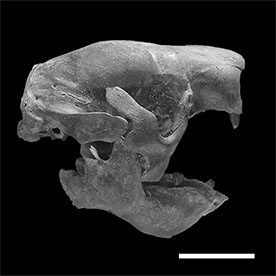
Additional Files
Published
Issue
Section
License
Copyright (c) 2023 Margarito Mora-Núñez, Claudia Aurora Uribe Mú, Yalma Luisa Vargas Rodríguez, Francisco Javier Sahagún Sánchez, Francisco Martín Huerta Martínez

This work is licensed under a Creative Commons Attribution-NoDerivatives 4.0 International License.

Authors retain copyright and grant the journal right of first publication with the work simultaneously licensed under a CC Attribution-NonCommercial 4.0 that allows others to share the work with an acknowledgement of the work's authorship and initial publication in this journal.





